
The 2nd Guards Tatsinskaya Tank Corps was a tank corps of the Soviet Union's Red Army that saw service during World War II on the Eastern Front of Europe. The unit's most notable moment was in the raid on Tatsinskaya during Operation Little Saturn in World War II. After the war, it continued to serve with the Soviet occupation forces in Central Europe. It was originally the 24th Tank Corps. The formation had approximately the same size and combat power as a Wehrmacht Panzer Division, and less than a British Armoured Division had during World War II.

The Russian 201st Military Base is a Russian military base based in Dushanbe, Tajikistan, part of the Central Military District. It was originally raised twice in World War II as part of the Soviet Union's Red Army and is now part of the Russian Ground Forces.
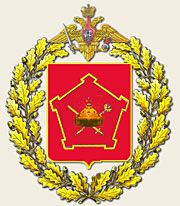
The Order of Lenin Moscow Military District was a military district of the Soviet Armed Forces and the Armed Forces of the Russian Federation. The district was awarded the Order of Lenin in 1968. In 2010 it was merged with the Leningrad Military District, the Northern Fleet and the Baltic Fleet to form the new Western Military District.

The Leningrad Military District was a military district of the Armed Forces of the Russian Federation. In 2010 it was merged with the Moscow Military District, the Northern Fleet and the Baltic Fleet to form the new Western Military District.
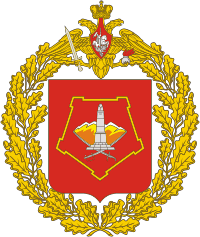
The Volga–Ural Military District was a military district of the Russian Ground Forces, formed on 1 September 2001 by the amalgamation of the Volga Military District and the Ural Military District. The headquarters of the Ural Military District, located at Yekaterinburg became the new headquarters of the merged district. In 2010 the District was merged with part of the Siberian Military District to form the new Central Military District.
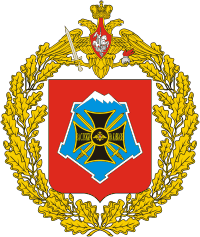
The North Caucasus Military District was a military district of the Russian Armed Forces, which became in 2010 the Southern Military District and lately also included the Black Sea Fleet and Caspian Flotilla.
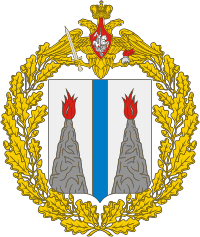
The Far Eastern Military District was a military district of the Armed Forces of the Russian Federation. In 2010 it was merged with the Pacific Fleet and part of the Siberian Military District to form the new Eastern Military District.
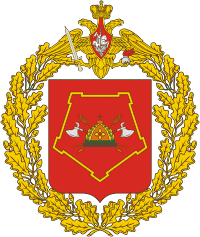
The Siberian Military District was a Military district of the Russian Ground Forces. The district was originally formed as a military district of the Russian Empire in 1864. In 1924 it was reformed in the Red Army. After the end of World War II the district was split into the Western and Eastern Siberian Military Districts. In 1956 the district was reformed. In 2010 it was divided between the two newly formed Central and Eastern Military Districts.

The 19th Voronezh-Shumlinskaya Red Banner Order of Suvorov and Red Banner of Labor Motor Rifle Division, is a division of the Russian Ground Forces. It appears to have been formed originally in July 1922 at Tambov in the Moscow Military District as a territorial formation. In 1923 it was awarded the 'Tambov' placename and renamed the 19th Voronezh Rifle Division. The division was downsized to a brigade in 2009 and reestablished as a division in 2020.
The 85th Leningrad-Pavlovsk Red Banner Motor Rifle Division was an infantry division of the Soviet Red Army converted to a motorised formation in 1957. It was part of the Russian Ground Forces until it was reorganised as the 32nd Separate Motor Rifle Brigade in 2009. In 2016, the 32nd Separate Motor Rifle Brigade was reorganised as the 228th Motor Rifle Regiment of the 90th Guards Tank Division.

The 40th Army of the Soviet Ground Forces was an army-level command that participated in World War II from 1941 to 1945 and was reformed specifically for the Soviet–Afghan War from 1979 to circa 1990. The Army became the land forces arm of the Soviet occupational force in Afghanistan in the 1980s, the Limited Contingent of Soviet Forces in Afghanistan.
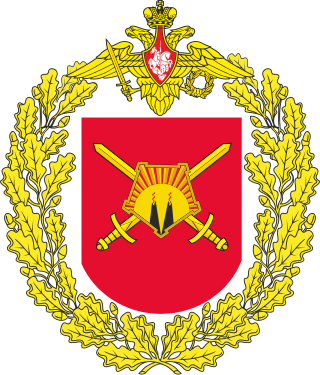
The 39th Separate Guards Red Banner Motor Rifle Brigade is a mechanized infantry brigade in the Russian Ground Forces. Originally formed as the Blagoveshchensk Fortified Region of the Soviet Union's Red Army in 1932, it became the basis for the 2nd formation of the 342nd Rifle Division and took part in the Soviet invasion of Manchuria. During the Cold War, it was reformed as the 56th Motor Rifle Division and later re-designated as the 33rd Separate Motor Rifle Division. In 2009, it was downsized and reorganized into the 39th Separate Motor Rifle Brigade as part of the 2008 Russian military reform.

The 22nd Mechanized Brigade is a formation of the Ukrainian Ground Forces. It traces its origins to the 66th Guards Rifle Division, originally a formation of the Red Army and later of the Soviet Ground Forces.

The 44th Kievskaya of the Red Banner Rifle Division of Nikolay Shchors, or 44th Kievskaya for short, was an elite military formation of the Soviet Union. Created during the beginnings of the Russian Civil War. It was destroyed during the Winter War, after being ordered to help the 163rd Infantry Division break a Finnish siege on the Raate road as part of the Special Rifle Corps 9th Army, together with the 54th Rifle Division. Afterwards it was levied and dissolved multiple times through out the 40's and 50's until its final dissolution in 1959.
The 5th Guards Zimovnikovskaya order Kutuzov II degree Motor Rifle Division, named on the 60th anniversary of the USSR, was a military formation of the Soviet Ground Forces. It was formed from the 6th Mechanized Corps created in 1940 and destroyed in 1941 in the beginning of Operation Barbarossa. The corps was reformed in November 1942 under the same name, but with a different organizational structure. In early 1943, the 6th Mechanized Corps was granted "Guards" status and became the 5th Guards Mechanized Corps.
The 372nd Rifle Red Banner Novgorod Division was a division of the Red Army during the Second World War.
The 13th Guards Army Corps was a corps of the Soviet Ground Forces, formed from the previous 13th Guards Rifle Corps, which saw service during the Second World War.
The 207th Rifle Division began its combat path under unusual circumstances. It was partly formed for the first time as a standard Red Army rifle division in the spring of 1941, before the German invasion, but was never completed. A second formation began in April 1942 and was completed on June 1, after which it was sent to the Stalingrad Front. Heavily depleted in counterattacks against the north flank of German Sixth Army, by November the survivors were reassigned and the division disbanded. The 207th was formed for a third time in June 1943, and fought its way through the central part of the Soviet-German front, ending the war in the heart of Berlin in the battle for the Reichstag. The division saw postwar service in the Group of Soviet Forces in Germany.
The 295th Rifle Division was an infantry division of the Soviet Union's Red Army and later the Soviet Army, formed twice.
The 17th Rifle Corps was a corps of the Red Army and later the Soviet Army, formed three times.













